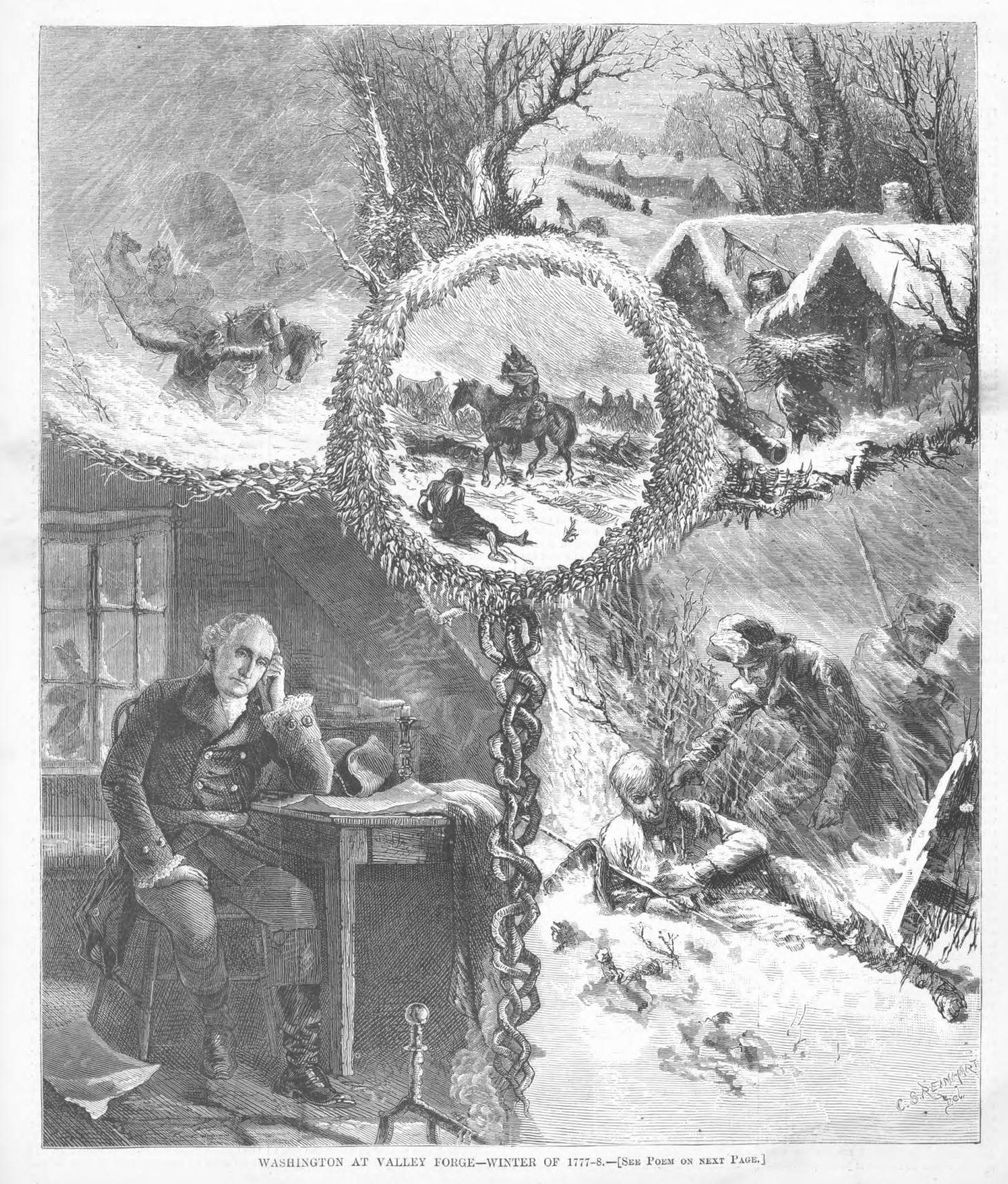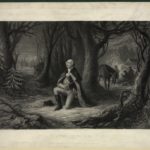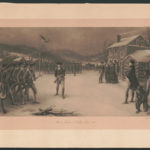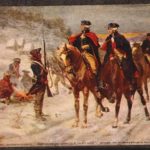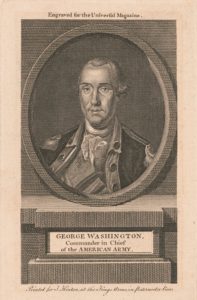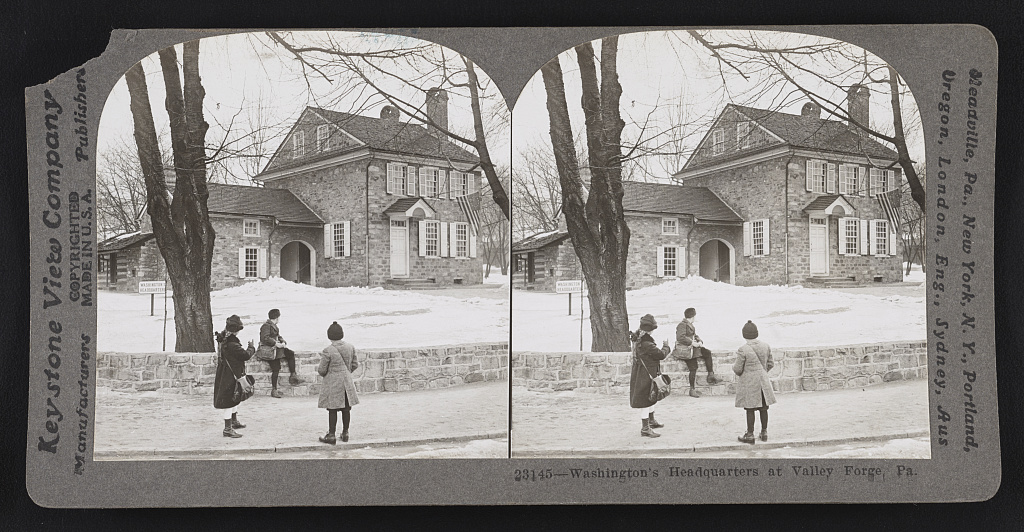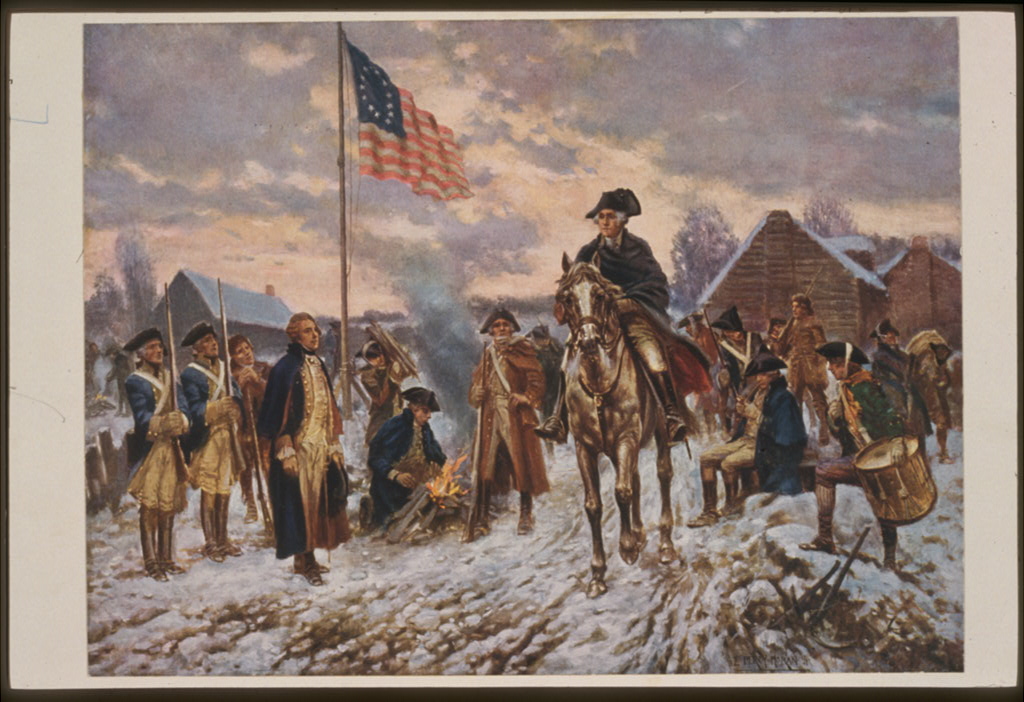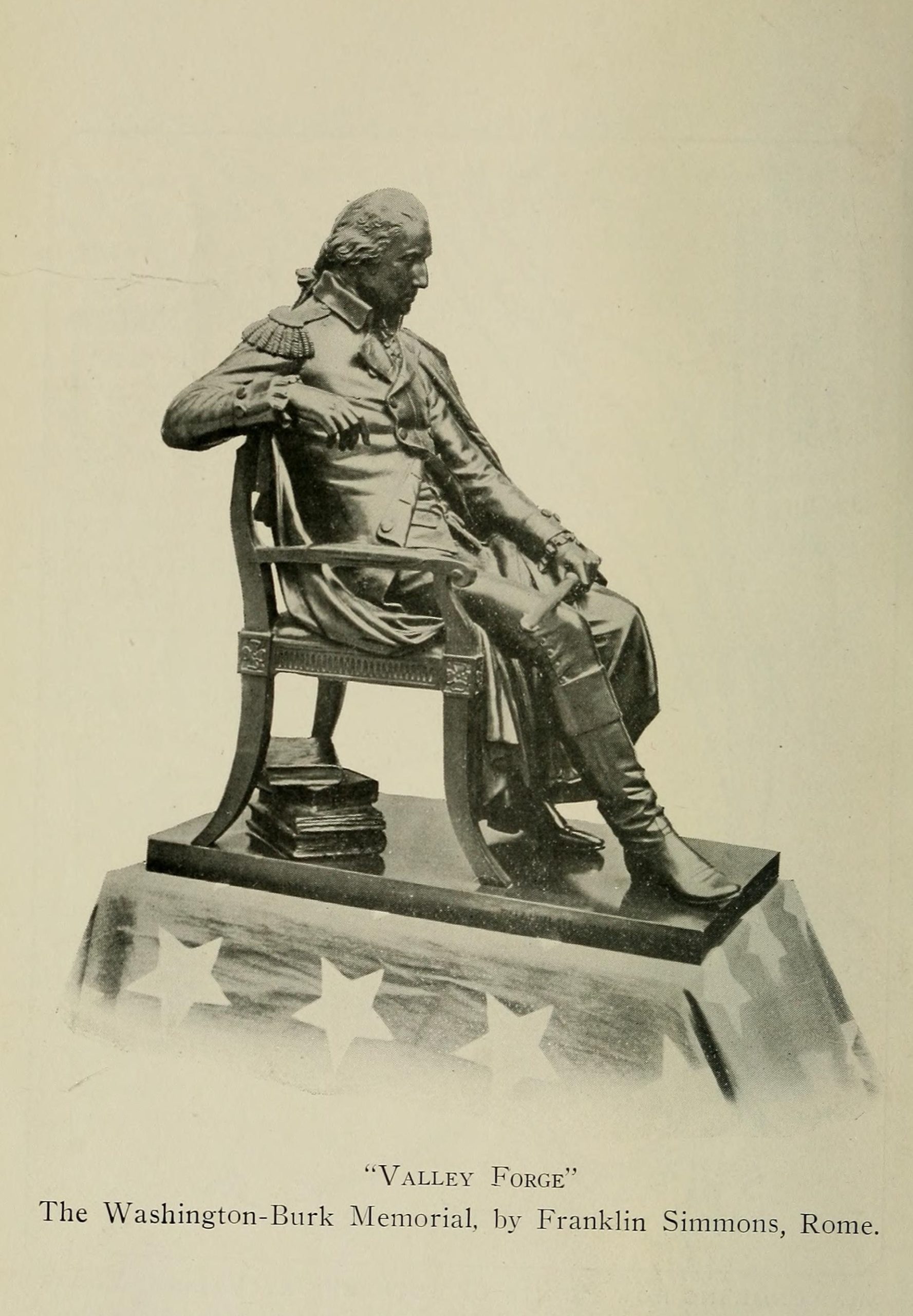From the March 1, 1873 issue of Harper’s Weekly:
WASHINGTON AT VALLEY FORGE.
[see Illustration on First Page.]
O Noble heart! that ne’er from duty swerved,
Nor thought of self through all the weary hours!
O noble life! that did for others live,
And for our nation gave its wondrous powers!
There were dark days, when clouds the sunshine hid,
And laid upon that heart a load of care;
But yet unshaken through the storm it stood,
Nor bowed itself save for new strength—in prayer!
And there were days of toil—of weary march
Through winter’s snow and sleet, when hearts,
though sad,
Pressed on, cheered by the voice of him who led—
The noblest chief that ever soldier had!
When destitution came upon them all,
And with it murmurs of their sore distress,
Ah! then he lent his strength their own to aid,
Nor failed in aught of brother’s tenderness.
O days long past! that held his glorious life!
We hold with joy the precious legacy
Of his great name! the name of Washington!
And by each tongue that name must honored be;
And as through clouds of sorrow and dismay
Men looked to him as to their guiding star,
So we within our hearts his memory hold,
Nor with disloyal breath its brightness mar!
According to the National Park Service, the suffering at Valley Forge was not quite as bad as the myth suggests:
“The myth often obscures the actual history of the event, however. It tells us that it was the experience of tremendous suffering from cold and starvation during the encampment that forged a spirit of extraordinary patriotism among Washington’s men. Hardship did occur at Valley Forge, but it was not a time of exceptional misery in the context of the situation. The encampment experience could be characterized as “suffering as usual,” for privation was the Continental soldier’s constant companion. Likewise, patriotism did not peak during the relatively short six-month period at Valley Forge. Widespread devotion to the cause was an early war phenomenon for the most part. Steadfast patriotism found a long-term home among only a few Americans, most notably the veterans who served for the duration.”
___________________________________
More information from the National Park Service article:
“Through the duration the encampment, Washington inspired the soldiers through his own resilience and sense of duty. He persuaded Congress to reform the supply system and end the crippling shortages, and attracted experienced officers to the cause, including former Prussian officer Baron von Steuben, who was assigned the task of training the troops. Von Steuben taught the soldiers new military skills and to fight as a unified army. These reforms in supply systems and fighting tactics, along with reforms in military hygiene and army organization, became the foundation of the modern United States Army.” …
“[D]isease was the true scourge of the camp,” especially during the warmer months of March, April, and May. …
“Because of its far-reaching consequences, the single most noteworthy achievement was the maturation of the Continental Army into a professional force under the tutelage of Friedrich Wilhelm Baron von Steuben. Baron von Steuben assessed the army and recognized that Washington’s men needed more training and discipline. At the same time he realized that American soldiers would not submit to harsh European-style regulation.
“Von Steuben did not try to introduce the entire system of drill, evolutions, maneuvers, discipline, tactics, and Prussian formation into the American army:
I should have been pelted had I attempted it, and should inevitably have failed. The genius of this nation is not in the least to be compared with that of the Prussians, Austrians, or French. You say to your soldier [in Europe], “Do this” and he doeth it; but [at Valley Forge] I am obliged to say, “This is the reason why you ought to do that,” and then he does it.
— Baron von Steuben to Baron de Gaudy, 1787-88
“Instead, von Steuben demonstrated to the men the positive results that would come from retraining. He provided hands-on lessons, and Washington’s independent-minded combat veterans were willing to learn new military skills when they saw immediate results. Von Steuben remarked on how quickly Washington’s men progressed in the retraining process, saying that it normally took two years to properly train a soldier. As spring wore on, whole brigades marched with newfound precision and crisply executed commands under the watchful eye of the baron.” …
“The symbolic importance that Americans have attached to Valley Forge since the 19th century both complicates and enriches its authentic history. The establishment of Valley Forge as a memorial provides a place where generations of Americans have had the opportunity to discover and admire the Continental Army’s sacrifices and achievements and to participate in commemoration of this history. The desire to commemorate began to shape the history of this place soon after the army marched out.”

